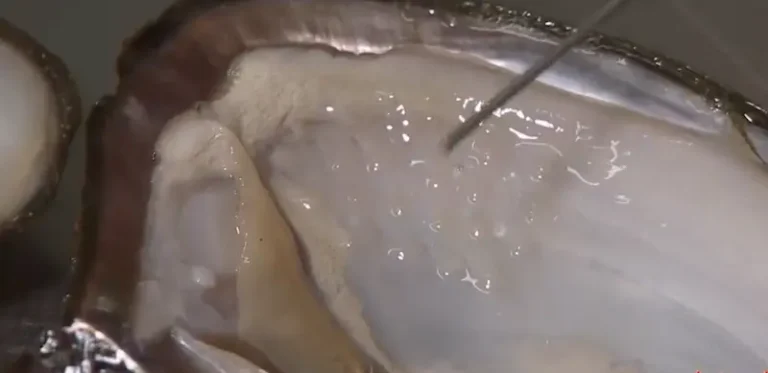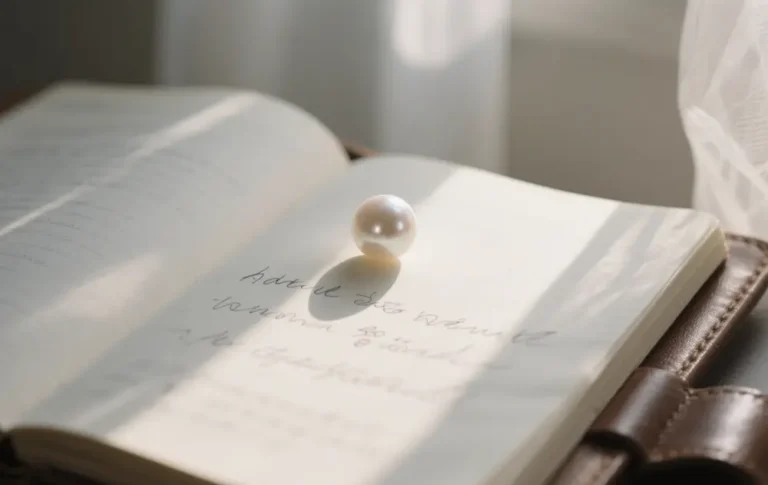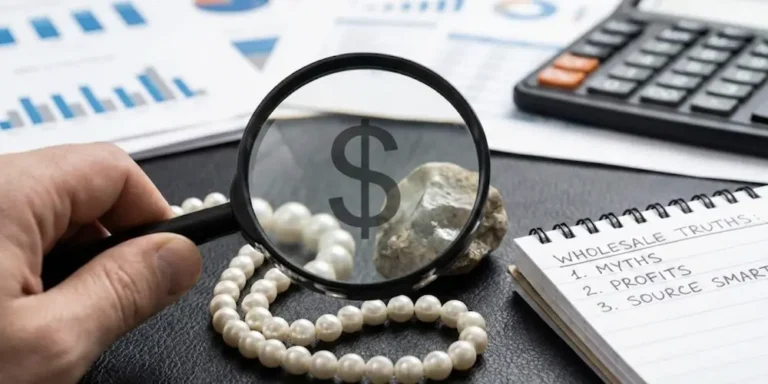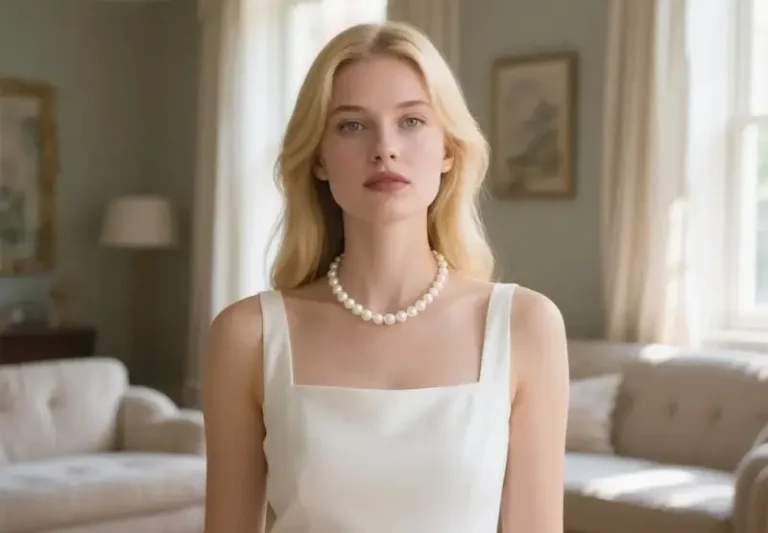Have you ever wondered what is a mabe pearl and what makes certain pearl jewelry pieces so uniquely beautiful with their distinctive dome-shaped appearance? Let me introduce you to the fascinating world of mabe pearls—sometimes called blister pearls—which have captivated jewelry lovers for centuries with their extraordinary charm and affordability.
Understanding What Is A Mabe Pearl
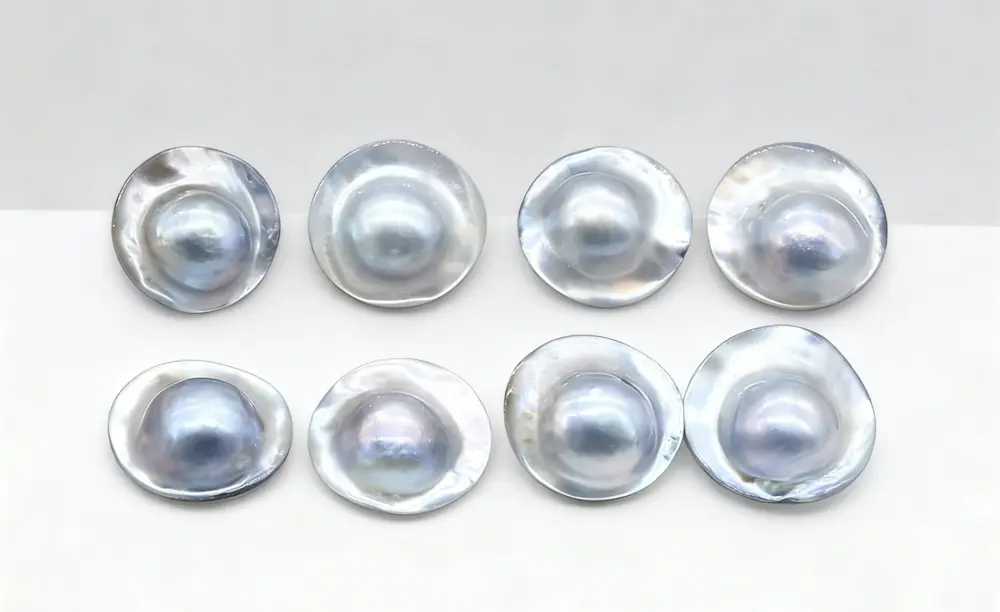
What is a mabe pearl, exactly? Unlike traditional round pearls that form freely within a mollusk’s soft tissue, a mabe pearl develops against the inner shell lining of the oyster. The cultivation process is quite remarkable. Pearl farmers carefully attach a small hemisphere-shaped nucleus—typically made from mother-of-pearl—directly to the interior shell wall.
Over a period of two to three years, the oyster reacts to this tiny annoyance by coating it with layers and layers of that shiny, iridescent nacre. The result is a beautiful half-pearl, flat on the back and perfectly rounded on top. It grows this way naturally, but you can think of it like a pearl that has been cut in half.
The name “blister pearl” comes from the fact that these pearls look like raised bumps or blisters on the inside of an oyster shell. Once enough nacre (the pearly coating) has built up, skilled craftspeople carefully remove the pearl from the shell. They then take out the original core, fill the empty space with resin…
The Historical Significance of Mabe Pearls
The name “mabe” comes from the Pteria penguin oyster, which is also called the mabe oyster. This oyster was used to grow these special pearls. These oysters are mainly found in the waters around Japan, Indonesia, and other parts of the South Pacific. To be sure they’re getting good quality, many jewelers work with a trusted Pearl Manufacturer who really knows the ins and outs of mabe pearl production.
Historically, what is a mabe pearl has been seen as a more affordable option than perfectly round pearls, but just as beautiful. Early Japanese pearl farmers figured out the techniques we still use today, realizing that these half-round gems could have the same stunning shine but cost less.
The 5 Key Characteristics That Define A Mabe Pearl
1. Distinctive Shape and Structure
The most noticeable thing about them is that they’re flat on one side and dome-shaped on the other, which is the defining characteristic of what is a mabe pearl. Mabe pearls are usually between 12mm and 20mm across, which is much bigger than many regular round cultured pearls. This makes them great for bold, eye-catching jewelry. The dome shape can be a gentle curve or a high, dramatic arch, depending on how they were grown and when they were harvested.
2. Exceptional Luster and Color Variety
What is a mabe pearl’s luster like? They’re just stunning. The layers of nacre create that classic pearl shimmer, often described as looking like moonlight reflecting on water. And they come in all sorts of colors:
- Classic white and cream tones
- Silvery-gray variations
- Golden champagne hues
- Deep black with peacock overtones (from black-lipped oysters)
- Rare pink and lavender shades
The color you get depends mainly on the type of shellfish and the minerals in the water around it. According to the Gemological Institute of America,, a pearl’s color is affected by both the oyster’s natural makeup and what’s going on in its environment.
3. Surface Quality and Natural Imperfections
Real mabe pearls may have small surface flaws, like tiny blemishes, ripples, or other small irregularities. These aren’t flaws; they’re proof of natural origin, which is a key trait of what is a mabe pearl! Perfectly smooth surfaces might indicate synthetic materials. The nacre should have depth and translucency when examined under light.
4. Cultivation Process Complexity
To understand what is a mabe pearl, you need to know how carefully it is grown. Mabe cultivation is different from wholesale pearls in that the nucleus needs to be placed right against the shell. Farmers have to keep a close watch on the oysters – making sure they’re healthy, the water is clean, and the temperature is just right – all throughout the several years they’re growing.
5. Affordability Meets Elegance
Here’s exciting news: mabe pearls offer exceptional value. Because they use less nacre than round pearls and the cultivation process is somewhat more predictable, they’re considerably more affordable. You can own a stunning mabe pearl for a fraction of what a comparable round pearl would cost, making the affordability a key part of the answer to what is a mabe pearl. This makes them perfect for those seeking luxury on a reasonable budget.
Popular Mabe Pearl Jewelry Styles
Earrings: The Perfect Canvas
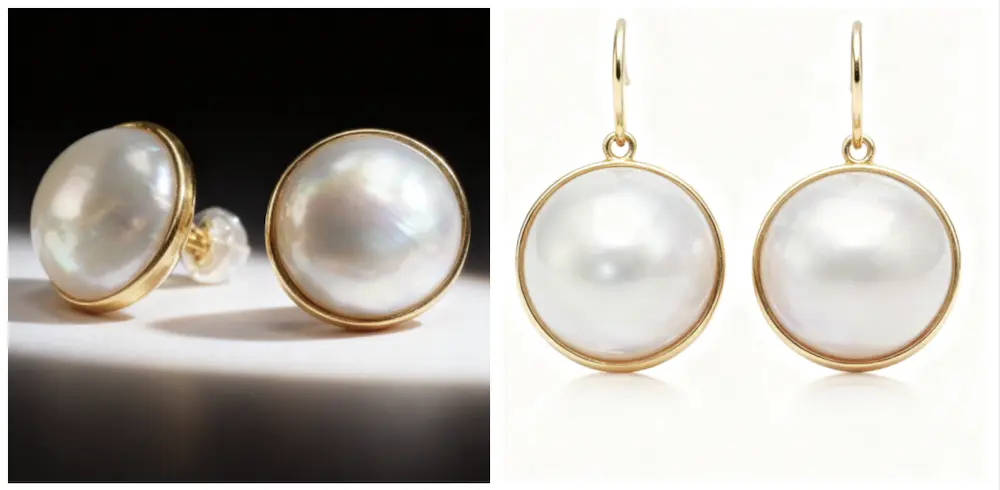
Mabe pearls are super popular as earrings. The flat back makes them comfy to wear against your ear, and the shiny, rounded front gives off a really classy look. Whether they’re studs or dangly earrings, mabe pearls just look gorgeous! Many jewelry designers pair them with diamonds or colored gemstones to create contemporary pieces.
Rings: Statement-Making Elegance
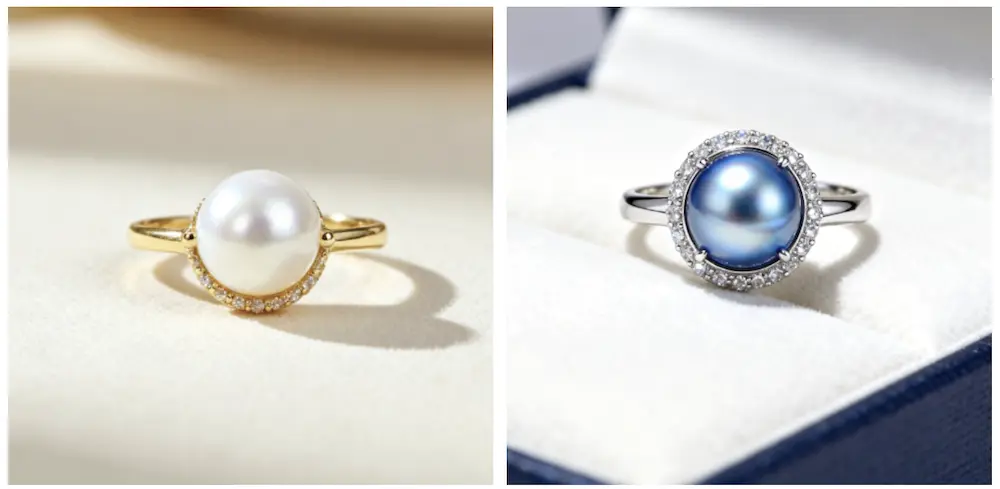
Large mabe pearls make dramatic cocktail rings. Set in yellow gold, white gold, or silver, they become conversation pieces. The flat backing makes them practical for daily wear, though like all pearls, they require gentle handling.
Pendants and Brooches: Vintage Charm Meets Modern Design
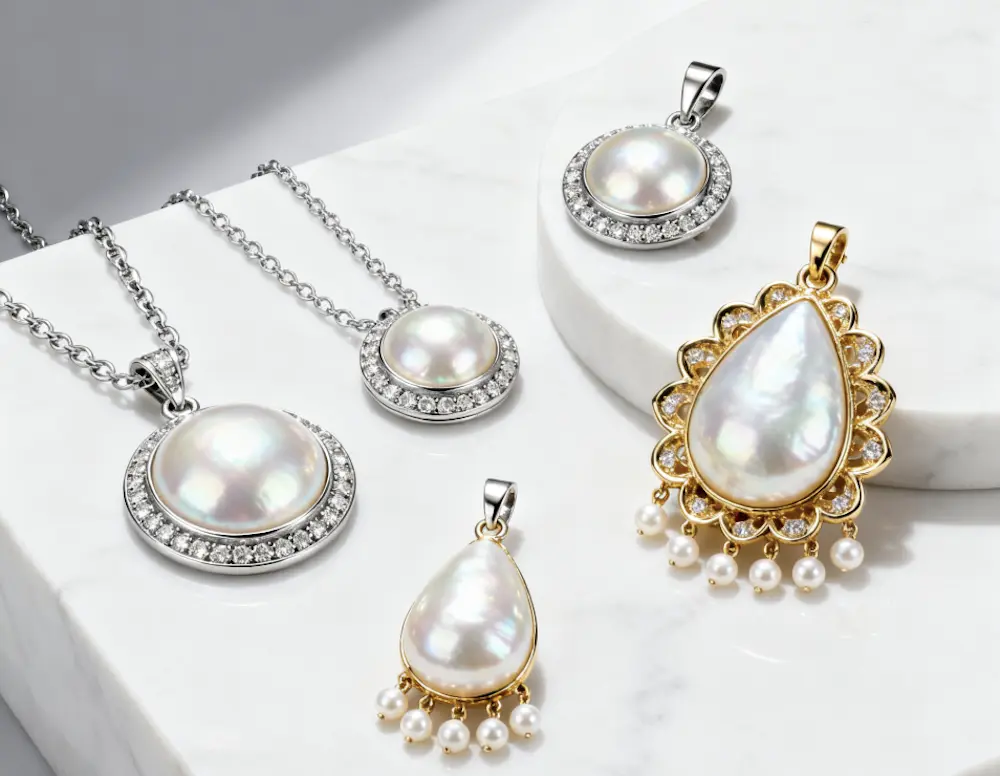
What is a mabe pearl’s versatility? Truly remarkable. These gems shine in pendant designs where their size can be fully appreciated. You know those old-fashioned brooches? A lot of them used mabe pearls, surrounded by fancy metal designs. That style is actually making a comeback with people who are into jewelry these days!
How to Identify Authentic Mabe Pearls
Are you unsure if your mabe pearl is real? Here is what you should look for:
Weight Test: If your mabe pearl feels heavy, it’s probably real. The mother-of-pearl backing and all the layers of nacre are what make it so. Plastic or resin fake pearls will feel a lot lighter.
Temperature Check: Try touching the pearl to your cheek or lips. At first, real pearls will feel cool, but they will slowly warm up to your body temperature. Fake ones just don’t do that!
Visual Inspection: Use a magnifying glass to look at it closely. When you look at a mabe pearl, pay close attention to its surface. You should be able to see tiny differences and flaws in the nacre. That’s what makes it beautiful and shows that it’s real. That natural texture can’t be perfectly copied by machines. Also, be sure to check out the flat back of the pearl! You’ll likely see a one-of-a-kind pattern there, showing exactly where it was cut from the shell.
Professional Authentication: If you have a pearl piece that is very valuable, you should have a professional look at it. You can be sure that a certified gemologist can tell you if your pearl is real. The Gemological Institute of America (GIA) and other groups like it offer these services and can tell you if it’s a real cultured pearl or just a piece of mother-of-pearl.
Caring for Your Mabe Pearl Jewelry
Pearls are delicate, so you’ve gotta treat them with care. Think of them as organic gems that need a little extra love, which is important when handling what is a mabe pearl. Keep them away from things like perfume, hairspray, and cleaning stuff because those chemicals can mess up the pearl’s surface. When you’re not wearing your mabe pearl jewelry, store it separately so harder gemstones don’t scratch it.
After you wear your pearls, just give them a quick wipe with a soft, damp cloth to keep them clean. And definitely don’t use those ultrasonic cleaners or any harsh chemicals on them! If you take good care of your mabe pearls, they’ll stay beautiful and shiny for years to come. Lots of collectors who buy pearl necklaces and individual mabe pearls find that this gentle cleaning really helps keep them looking great forever.
Current Market Trends and Value Considerations
Mabe pearls are coming back in a big way in jewelry, especially with younger people who want unique, eco-friendly luxury. How much do mabe pearls cost these days? Well, the price depends on a few things:
- Size matters: Bigger pearls, like those around 18-20mm, will cost you more.
- Shine bright: The better the luster (that reflective quality of the pearl), the higher the price. We’re talking about pearls with a really nice, almost mirror-like shine.
- Rare colors are special: If you find natural black, golden, or pink mabe pearls, those are the most valuable.
Where it’s from is key: Mabe pearls from Japan and Indonesia are usually considered to be the best quality. - Setting it off: A well-made setting using precious metals and nice gemstones will definitely add to the overall value.
A really nice mabe pearl around could sell for anywhere between and . Now, if you’re talking about a truly exceptional pearl set by a well-known designer, you could see prices jump to or even and beyond. When you compare that to round cultured pearls of the same size and quality, mabe pearls offer incredible value for the money, making the answer to what is a mabe pearl often related to excellent affordability.
Mabe Pearls vs. Traditional Round Pearls: Key Differences
| Feature | Mabe Pearls | Round Pearls |
|---|---|---|
| Shape | Hemisphere with flat back | Spherical |
| Cultivation Location | Against shell interior | Within mollusk tissue |
| Typical Size | 12-20mm+ | 6-14mm (most common) |
| Price Point | More affordable | Generally more expensive |
| Best Used In | Earrings, rings, brooches | Necklaces, all jewelry types |
| Cultivation Time | 2-3 years | 1-4 years depending on type |
The Environmental and Ethical Aspects
The great thing about modern pearl farming, including how they grow mabe pearls, is that it can be really sustainable if done right. Oysters are like natural water filters, which means they help keep the water clean. Good pearl farms make sure to take care of the ocean and often even help protect our coastlines, adding an eco-friendly dimension to what is a mabe pearl.
It’s always a good idea to ask where mabe pearls come from before you buy them. Good, honest pearl suppliers should be able to tell you how they farm and how they keep the environment safe. You can be sure that the luxury you buy is good for the environment this way.
Why Mabe Pearls Deserve a Place in Your Collection
So, why are mabe pearls so popular in jewelry these days? They have something very special about them: they look and feel like pearls, but they’re easy to wear and get to, which is part of the appeal of what is a mabe pearl. Because of their shape, you can’t make the same designs with round pearls.
Mabe pearls are classy without being showy, so they are great for anyone who likes pretty things, is getting married and wants something special, or collects jewelry. They whisper sophistication instead of shouting wealth, so you can wear them every day or save them for special occasions.
Their flat backs ensure they sit securely and comfortably, so you won’t have to worry about your rings or earrings shifting, which is a key practical answer to what is a mabe pearl. They’re also perfectly sized – noticeable and attractive, but not so large that they’re over the top. There is a perfect mabe pearl for every style and taste, and there are so many pretty colors to choose from.
Conclusion: Embracing the Beauty of Mabe Pearls
Understanding what is a mabe pearl can really spark your creativity when it comes to jewelry design. These unique gems blend the expertise of generations of pearl farmers with the beauty of nature. They offer a more affordable way to own pearls for today’s jewelry lovers. From their distinctive dome shape to their gorgeous luster, mabe pearls prove that innovation in traditional crafts can create something truly timeless.
These half-pearls are worth a look, whether you like the classic white ones that go with everything or the rarer golden ones that really stand out. They’re the perfect mix of natural beauty, skilled craftsmanship, and luxury that isn’t hard to find. These are things that will always be in style.
Ready to check out mabe pearls yourself? If you can, start by seeing them in person, feeling how heavy they are, and admiring how they shine. Work with jewelers who know their stuff, or a Pearl Manufacturer you can trust, who can help you find good quality pearls that you like and that fit your budget, now that you know what is a mabe pearl. Your ideal mabe pearl is out there, just waiting for you to make it into a piece of jewelry you’ll adore.
FAQs
Are Mabe pearls valuable?
Yes, Mabe pearls are valuable, offering excellent worth for their large size and high luster compared to perfectly round pearls, making them a luxurious yet affordable option.
What is the difference between a pearl and a Mabe Pearl?
A pearl (like freshwater pearl, Akoya or South Sea) is a fully round gem grown inside the oyster’s tissue, while a Mabe pearl is dome-shaped (flat on one side) because it’s grown attached to the inside surface of the oyster’s shell.
How to identify a Mabe Pearl?
You can identify a Mabe pearl by its distinctive half-sphere or dome shape, its flat back where it was cut from the shell, and its often larger size (typically 12mm to 20mm or more).
Is a Mabe Pearl real?
Yes, a Mabe pearl is a real, natural cultured pearl. It’s formed by an oyster over a nucleus attached to the shell, and the resulting half-sphere gem is then harvested, filled, and backed for jewelry.

